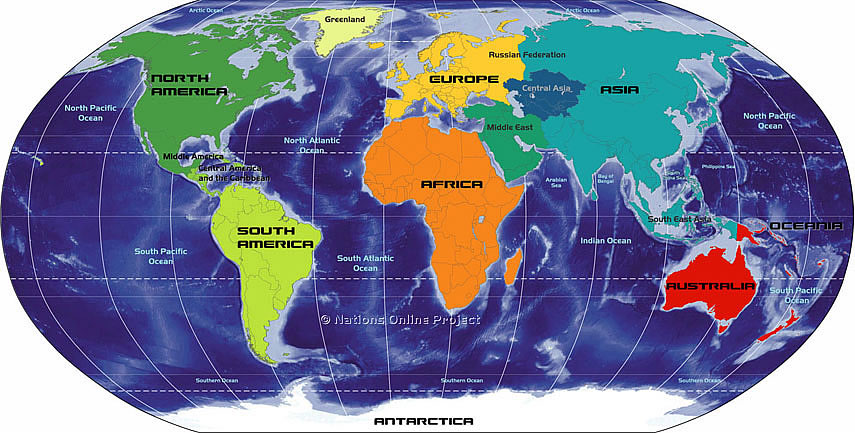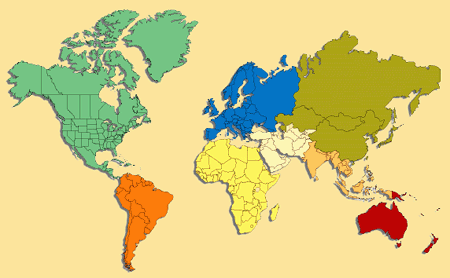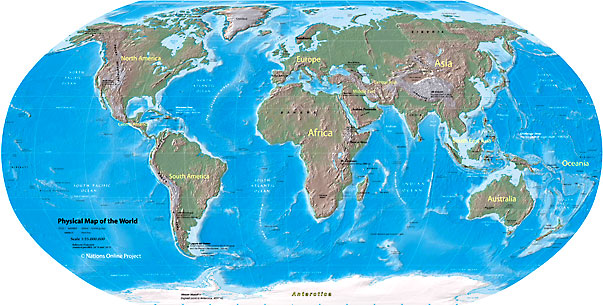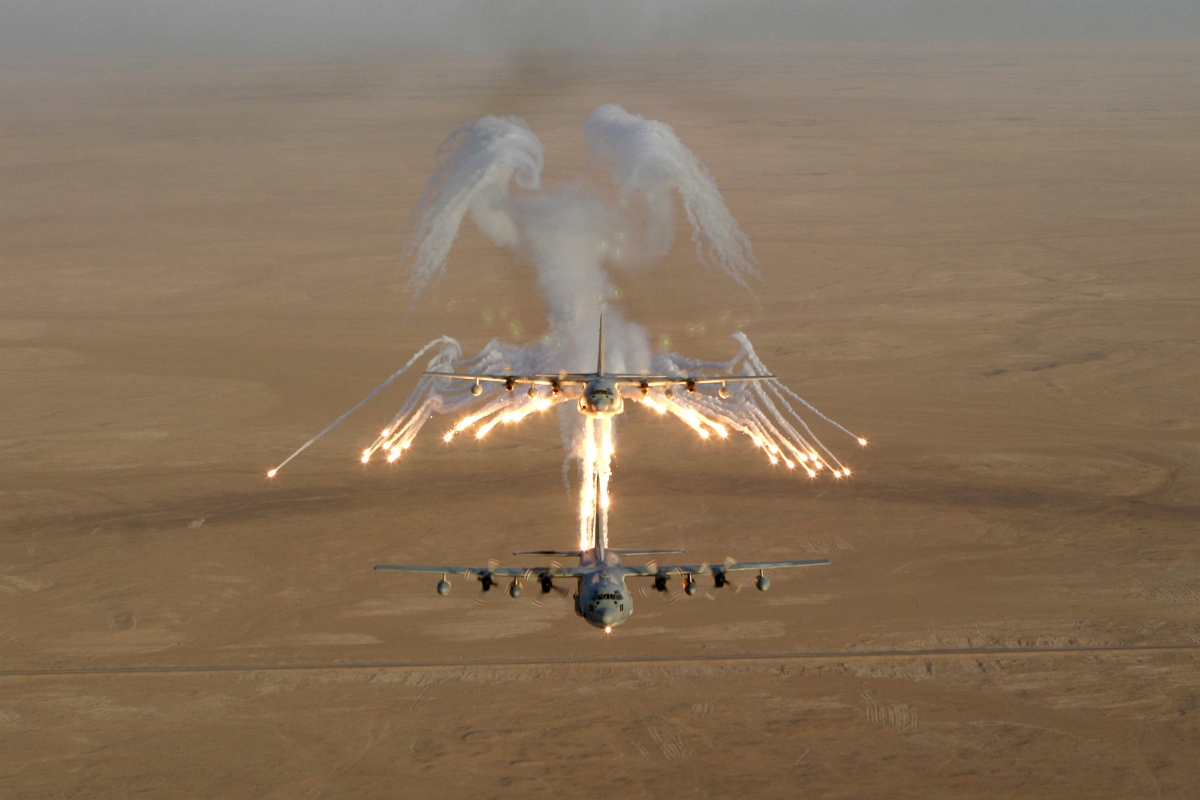The
United States Marine Corps (
USMC) is a branch of the United States Armed Forces responsible for providing power projection from the sea,
using the mobility of the United States Navy to deliver combined-arms task forces rapidly. It is one of seven uniformed services of the United States. In the civilian leadership structure of the United States military, the Marine Corps is a component of the United States Department of the Navy,
often working closely with U.S. naval forces for training, transportation, and logistic purposes; however, in the military leadership structure the Marine Corps is a separate branch.
Captain Samuel Nicholas formed two battalions of Continental Marines on 10 November 1775 in Philadelphia as naval infantry.
Since then, the mission of the Marine Corps has evolved with changing military doctrine and American foreign policy. The Marine Corps has served in every American armed conflict and attained prominence in the 20th century when its theories and practices of amphibious warfare proved prescient and ultimately formed the cornerstone of the Pacific campaign of World War II.
By the mid-20th century, the Marine Corps had become the dominant theorist and practitioner of amphibious warfare.
Its ability to rapidly respond on short notice to expeditionary crises gives it a strong role in the implementation and execution of American foreign policy.
The United States Marine Corps includes just under 203,000 active duty Marines (as of October 2010
[update])
and just under 40,000 reserve Marines (as of 2010
[update]).
It is the smallest of the United States' armed forces in the Department of Defense (the United States Coast Guard is smaller, about one-fifth the size of the Marine Corps, but is normally under the Department of Homeland Security). The Marine Corps is nonetheless larger than the armed forces of many significant military powers; for example, it is larger than the active duty Israel Defense Forces and the entire British Army.
The Marine Corps accounts for around six percent of the military budget of the United States. The cost per Marine is $20,000 less than the cost of a serviceman from the other services, and the entire force can be used for both hybrid and major combat operations,
that is, the Marines cover the entire Three Block War. However, the per capita costs may be misleading due to being shifted to other branches, such as the Navy's amphibious warfare ships.
Mission The United States Marine Corps (USMC)
The United States Marine Corps serves as an amphibious force-in-readiness. As outlined in 10 U.S.C. § 5063 and as originally introduced under the National Security Act of 1947, it has three primary areas of responsibility:
- The seizure or defense of advanced naval bases and other land operations to support naval campaigns;
- The development of tactics, technique, and equipment used by amphibious landing forces; and
- Such other duties as the President may direct.
This last clause, while seemingly redundant given the president's position as Commander-in-chief, is a codification of the expeditionary duties of the Marine Corps. It derives from similar language in the Congressional acts
"For the Better Organization of the Marine Corps" of 1834, and
"Establishing and Organizing a Marine Corps" of 1798. In 1951, the House of Representatives' Armed Services Committee called the clause "one of the most important statutory — and traditional — functions of the Marine Corps." It noted that the corps has more often than not performed actions of a non-naval nature, including its famous actions in the War of 1812, at Tripoli, Chapultepec, numerous counter-insurgency and occupational duties (such as those in Central America), World War I, and the Korean War. While these actions are not accurately described as support of naval campaigns nor as amphibious warfare, their common thread is that they are of an expeditionary nature, using the mobility of the Navy to provide timely intervention in foreign affairs on behalf of American interests.
In addition to its primary duties, the Marine Corps has missions in direct support of the White House and the State Department. The Marine Band, dubbed the "President's Own" by Thomas Jefferson, provides music for state functions at the White House. Marines guard presidential retreats, including Camp David,
and the Marines of the Executive Flight Detachment of HMX-1 provide helicopter transport to the President and Vice President, using the call signs "Marine One" and "Marine Two" respectively.
By authority of the 1946 Foreign Service Act, the Marine security guards of the Marine Embassy Security Command provide security for American embassies, legations, and consulates at more than 140 posts worldwide.
Historical mission The United States Marine Corps (USMC)
The Marine Corps was founded to serve as an infantry unit aboard naval vessels and was responsible for the security of the ship and its crew by conducting offensive and defensive combat during boarding actions and defending the ship's officers from mutiny; to the latter end, their quarters on ship were often strategically positioned between the officers' quarters and the rest of the vessel. Continental Marines also manned raiding parties, both at sea and ashore. America's first amphibious assault landing occurred early in the Revolutionary War as the Marines gained control of a British ammunition depot and naval port in New Providence, the Bahamas. The role of the Marine Corps has since expanded significantly; as the importance of its original naval mission declined with changing naval warfare doctrine and the professionalization of the Naval service, the corps adapted by focusing on what were formerly secondary missions ashore. The Advanced Base Doctrine of the early 20th century codified their combat duties ashore, outlining the use of Marines in the seizure of bases and other duties on land to support naval campaigns.
Throughout the late 19th and 20th centuries, Marine detachments served aboard Navy cruisers, battleships and carriers. Marine detachments (generally one platoon per cruiser, a company for battleships or carriers) served their traditional duties as ship's landing force, manning the ship's weapons and providing shipboard security. Marine detachments were also augmented by members of the ship's company for landing parties, especially in the Caribbean and Mexico campaigns of the early 20th centuries. Marines would also develop tactics and techniques of amphibious assault on defended coastlines in time for use in World War II.
During World War II, Marines continued to serve on capital ships. They often were assigned to man anti-aircraft batteries. When gun cruisers were retired by the 1960s, the remaining Marine detachments were only seen on battleships and carriers. Its original mission of providing shipboard security finally ended in the 1990s when nuclear weapons were withdrawn from active deployment and the battleships were retired.
Capabilities The United States Marine Corps (USMC)

Marines from the 13th Marine Expeditionary Unit
The Marine Corps fulfills a vital role in national security as an amphibious, expeditionary, air-ground combined arms task force, capable of forcible entry from the air, land, and sea. It is capable of asymmetric warfare with conventional, irregular, and hybrid forces.
While the Marine Corps does not employ any unique combat arms, as a force it has the unique ability to rapidly deploy a combined-arms task force to almost anywhere in the world within days. The basic structure for all deployed units is a Marine Air-Ground Task Force (MAGTF) that integrates a ground combat element, an aviation combat element and a logistics combat element combat component under a common command element. While the creation of joint commands under the Goldwater–Nichols Act has improved inter-service coordination between each branch, the Corps' ability to permanently maintain integrated multi-element task forces under a single command provides a smoother implementation of combined-arms warfare principles.
The close integration of disparate Marine units stems from an organizational culture centered around the infantry. Every other Marine capability exists to support the infantry. Unlike some Western militaries, the Corps remained conservative against theories proclaiming the ability of new weapons to win wars independently. For example, Marine aviation has always been focused on close air support and has remained largely uninfluenced by air power theories proclaiming that strategic bombing can single-handedly win wars.
This focus on the infantry is matched with the doctrine that "Every Marine is a rifleman", a focus of Commandant Alfred M. Gray, Jr., emphasizing the infantry combat abilities of every Marine. All Marines, regardless of military specialization, receive training as a rifleman; and all officers receive additional training as infantry platoon commanders.
Marines have demonstrated the value of this culture many times throughout history. For example, at Wake Island, when all of the Marine aircraft were shot down, pilots continued the fight as ground officers, leading supply clerks and cooks in a final defensive effort.
As a result, a large degree of initiative and autonomy is expected of junior Marines, particularly the NCOs (corporals and sergeants), as compared with many other military organizations. The Marine Corps emphasizes authority and responsibility downward to a greater degree than the other military services. Flexibility of execution is implemented via an emphasis on "commander's intent" as a guiding principle for carrying out orders; specifying the end state but leaving open the method of execution.
The amphibious assault techniques developed for World War II evolved, with the addition of air assault and maneuver warfare doctrine, into the current "
Operational Maneuver from the Sea" doctrine of power projection from the seas.
The Marines are credited with the development of helicopter insertion doctrine and were the earliest in the American military to widely adopt maneuver-warfare principles which emphasize low-level initiative and flexible execution. In light of recent warfare that has strayed from the Corp's traditional missions,
it has renewed an emphasis on amphibious capabilities.
The Marine Corps relies on the Navy for sealift to provide its rapid deployment capabilities. In addition to basing a third of the Fleet Marine Force in Japan, Marine Expeditionary Units (MEU) are typically stationed at sea. This allows the ability to function as first responders to international incidents. The United States Army now maintains light infantry units capable of rapid worldwide deployment, but those units do not match the combined-arms integration of a MAGTF and lack the logistics that the Navy provides.
For this reason, the Marine Corps is often assigned to non-combat missions such as the evacuation of Americans from unstable countries and providing humanitarian relief during natural disasters. In larger conflicts, Marines act as a stopgap, to get into and hold an area until larger units can be mobilized. The Corps performed this role in World War I and the Korean War, where Marines were the first significant combat units deployed from the United States and held the line until the country could mobilize for war.
To aid rapid deployment, the Maritime Pre-Positioning System was developed: fleets of container ships are positioned throughout the world with enough equipment and supplies for a Marine Expeditionary Force to deploy for 30 days.
Equipment The United States Marine Corps (USMC)

Marine sniper using the Designated Marksman Rifle (DMR)
Infantry weapons
The basic infantry weapon of the Marine Corps is the M16 assault rifle family, with a majority of Marines being equipped with the M16A2 or M16A4 service rifles (the M16A2 is being phased out). The M4 carbine, a compact variant of the M16, has also been issued.
The standard side arm is the M9 pistol. Suppressive fire is provided by the M249 SAW and M240G machine guns, at the squad and company levels respectively. In addition, indirect fire is provided by the M203 grenade launcher in fireteams, M224 60 mm mortar in companies, and M252 81 mm mortar in battalions. The M2 .50 caliber heavy machine gun and MK19 automatic grenade launcher (40 mm) are available for use by dismounted infantry, though they are more commonly vehicle-mounted. Precision firepower is provided by the M40 sniper rifle and M82 anti-materiel rifle by Scout Snipers, while designated marksmen use the DMR (being replaced by the M39 EMR), and the SAM-R.
The Marine Corps utilizes a variety of direct-fire rockets and missiles to provide infantry with an offensive and defensive anti-armor capability. The SMAW and AT4 are unguided rockets that can destroy armor and fixed defenses (e.g., bunkers) at ranges up to 500 meters. The Predator SRAW, FGM-148
Javelin and BGM-71 TOW are anti-tank guided missiles. The Javelin can utilize top-attack profiles to avoid heavy frontal armor. The Predator is a short-range fire-and-forget weapon; the Javelin and TOW are heavier missiles effective past 2,000 meters that give infantry an offensive capability against armor.

An M1A1 Abrams tank of the 13th MEU
Ground vehicles
The Corps operates the same High Mobility Multipurpose Wheeled Vehicle (HMMWV) and M1A1 Abrams tank as does the Army. However, for its specific needs, the Corps uses a number of unique vehicles. The LAV-25 is a dedicated wheeled armored personnel carrier, similar to the Army's Stryker vehicle, used to provide strategic mobility.
Amphibious capability is provided by the AAV-7A1 Amphibious Assault Vehicle, an armored tracked vehicle that doubles as an armored personnel carrier, due to be replaced by the Expeditionary Fighting Vehicle, a faster vehicle with superior armor and weaponry. The threat of land mines and improvised explosive devices in Iraq and Afghanistan has also seen the Corps begin purchasing heavy armored vehicles that can better withstand the effects of these weapons as part of the Mine Resistant Ambush Protected vehicle program.
The Marine Corps has ordered 1,960 MRAP vehicles, hoping to use them to replace HMMWVs and some Medium Tactical Vehicle Replacements on patrols in Iraq.
The Logistics Vehicle System Replacement began replacing the Logistics Vehicle System in 2009.
Prior to 2005, the Marines operated exclusively tube artillery—the M198 155 mm howitzer, now being replaced by the M777 155 mm howitzer. However, the Corps has expanded its artillery composition to include the High Mobility Artillery Rocket System (HIMARS), a truck-mounted rocket artillery system. Both are capable of firing guided munitions.
Aircraft
The organic aviation capability of the Marine Corps is essential to its mission. The Corps operates both rotary-wing and fixed-wing aircraft mainly to provide assault support and close air support to its ground forces. However, other aircraft types are also used in a variety of support and special-purpose roles.
The light-attack and light transport capabilities are provided by AH-1W SuperCobras and UH-1N Hueys, slated to be replaced by the Bell AH-1Z Viper and the Bell UH-1Y Venom.
Medium-lift squadrons flying the CH-46E Sea Knight and CH-53D Sea Stallion helicopters are in the process of converting to the MV-22 Osprey, a tiltrotor with superior range and speed. Heavy-lift squadrons are equipped with the CH-53E Super Stallion helicopter, eventually to be replaced with the upgraded CH-53K.
Marine attack squadrons fly the AV-8B Harrier II; while the fighter/attack mission is handled by the single-seat and dual-seat versions of the F/A-18 Hornet strike-fighter aircraft. The AV-8B is a V/STOL aircraft that can operate from amphibious assault ships, land air bases and short, expeditionary airfields, while the F/A-18 can only be flown from land or aircraft carriers. Both are slated to be replaced by the STOVL B version of the F-35 Lightning II, beginning training operations in 2008.
In addition, the Corps operates its own organic aerial refueling and electronic warfare (EW) assets in the form of the KC-130 Hercules and EA-6B Prowler, respectively. The Hercules doubles as a ground refueller and tactical-airlift transport aircraft. The Prowler is the only active tactical electronic warfare aircraft left in the United States inventory, and has been labeled a "national asset"; frequently borrowed along with Navy Prowlers and EA-18G Growlers to assist in any American combat action since the retirement of the Air Force's own EW aircraft.
The Marines also operate unmanned aerial vehicles: the RQ-7 Shadow and Scan Eagle for tactical reconnaissance.
Marine Fighter Training Squadron 401 (VMFT-401), operates F-5E, F-5F and F-5N Tiger II aircraft in support of air combat adversary (aggressor) training. Marine Helicopter Squadron One (HMX-1) operates the VH-3D Sea King and VH-60N Whitehawk helicopters in the VIP transport role, most notably Marine One, but are due to be replaced. A single Marine Corps C-130 Hercules aircraft "Fat Albert" is used to support the US Navy's flight demonstration team, the "Blue Angels".
Marine bases and stations

AV-8B Harrier IIs from VMA-231 over MCAS Cherry Point in 1990 The Marine Corps operates many major bases, 14 of which host operating forces, several support and training installations, as well as satellite facilities.
Marine Corps bases are concentrated around the locations of the Marine Expeditionary Forces, though reserve units are scattered throughout the United States. The principal bases are Camp Pendleton on the West Coast, home to I MEF; Camp Lejeune on the East Coast, home to II MEF; and Camp Butler in Okinawa, Japan, home to III MEF.
Other important bases include air stations, recruit depots, logistics bases, and training commands. Marine Corps Air Ground Combat Center Twentynine Palms in California is the Marine Corps' largest base and home to the Corps' most complex, combined-arms, live-fire training. Marine Corps Base Quantico in Virginia is home to Marine Corps Combat Development Command, and nicknamed the "Crossroads of the Marine Corps".
Marines also operate detachments at many installations owned by other branches, to better share resources, such as specialty schools. Marines are also present at, and operate many, forward bases during expeditionary operations. Finally, Marines operate a presence in the National Capital Region, with Headquarters Marine Corps scattered amongst the Pentagon, Henderson Hall, Washington Navy Yard, and Marine Barracks, Washington, D.C..


















































